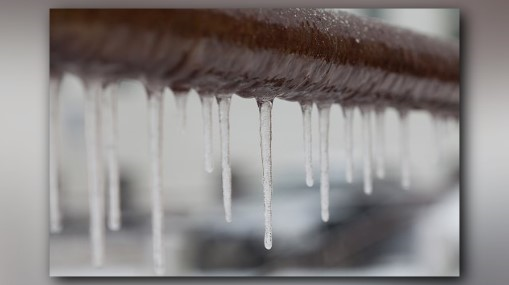Preventing Pipes from Freezing: Best Methods
Preventing Pipes from Freezing: Best Methods
Blog Article
What are your thoughts and feelings on How To Avoid Freezing Pipes?

Winter can damage your plumbing, specifically by freezing pipes. Below's how to avoid it from happening and what to do if it does.
Introduction
As temperature levels drop, the risk of icy pipelines boosts, possibly causing costly repair work and water damages. Recognizing just how to stop frozen pipes is essential for house owners in chilly environments.
Avoidance Tips
Insulating prone pipes
Cover pipelines in insulation sleeves or use heat tape to secure them from freezing temperature levels. Concentrate on pipes in unheated or external areas of the home.
Heating strategies
Maintain indoor rooms appropriately heated, especially areas with plumbing. Open cupboard doors to enable cozy air to circulate around pipes under sinks.
Exactly how to identify frozen pipelines
Seek decreased water circulation from faucets, unusual odors or noises from pipelines, and noticeable frost on revealed pipes.
Long-Term Solutions
Architectural modifications
Think about rerouting pipes away from outside wall surfaces or unheated locations. Add extra insulation to attics, cellars, and crawl spaces.
Upgrading insulation
Invest in top quality insulation for pipelines, attic rooms, and wall surfaces. Proper insulation aids preserve regular temperatures and decreases the threat of frozen pipes.
Securing Outside Pipes
Garden pipes and outside faucets
Disconnect and drain yard hoses before wintertime. Install frost-proof spigots or cover outdoor taps with shielded caps.
Comprehending Icy Pipes
What creates pipelines to ice up?
Pipes freeze when revealed to temperature levels listed below 32 ° F (0 ° C) for prolonged periods. As water inside the pipelines ices up, it increases, putting pressure on the pipe wall surfaces and potentially triggering them to burst.
Dangers and damages
Icy pipelines can lead to water system interruptions, residential property damage, and costly repairs. Ruptured pipes can flood homes and cause considerable architectural damage.
Indicators of Frozen Pipes
Identifying frozen pipes early can stop them from breaking.
What to Do If Your Pipes Freeze
Immediate actions to take
If you believe frozen pipes, keep faucets open to soothe stress as the ice melts. Make use of a hairdryer or towels soaked in warm water to thaw pipes slowly.
Verdict
Preventing frozen pipelines calls for proactive actions and quick actions. By recognizing the reasons, signs, and preventive measures, property owners can shield their pipes during winter.
5 Ways to Prevent Frozen Pipes
Drain Outdoor Faucets and Disconnect Hoses
First, close the shut-off valve that controls the flow of water in the pipe to your outdoor faucet. Then, head outside to disconnect and drain your hose and open the outdoor faucet to allow the water to completely drain out of the line. Turn off the faucet when done. Finally, head back to the shut-off valve and drain the remaining water inside the pipe into a bucket or container. Additionally, if you have a home irrigation system, you should consider hiring an expert to clear the system of water each year.
Insulate Pipes
One of the best and most cost-effective methods for preventing frozen water pipes is to wrap your pipes with insulation. This is especially important for areas in your home that aren’t exposed to heat, such as an attic. We suggest using foam sleeves, which can typically be found at your local hardware store.
Keep Heat Running at 65
Your pipes are located inside your walls, and the temperature there is much colder than the rest of the house. To prevent your pipes from freezing, The Insurance Information Institute suggests that you keep your home heated to at least 65 degrees, even when traveling. You may want to invest in smart devices that can keep an eye on the temperature in your home while you’re away.
Leave Water Dripping
Moving water — even a small trickle — can prevent ice from forming inside your pipes. When freezing temps are imminent, start a drip of water from all faucets that serve exposed pipes. Leaving a few faucets running will also help relieve pressure inside the pipes and help prevent a rupture if the water inside freezes.
Open Cupboard Doors
Warm your kitchen and bathroom pipes by opening cupboards and vanities. You should also leave your interior doors ajar to help warm air circulate evenly throughout your home.

We had been made aware of that write-up on How To Avoid Freezing Pipes from a friend on another web blog. If you enjoyed our page kindly consider to pass it around. We take joy in your readership.
About This Report this page